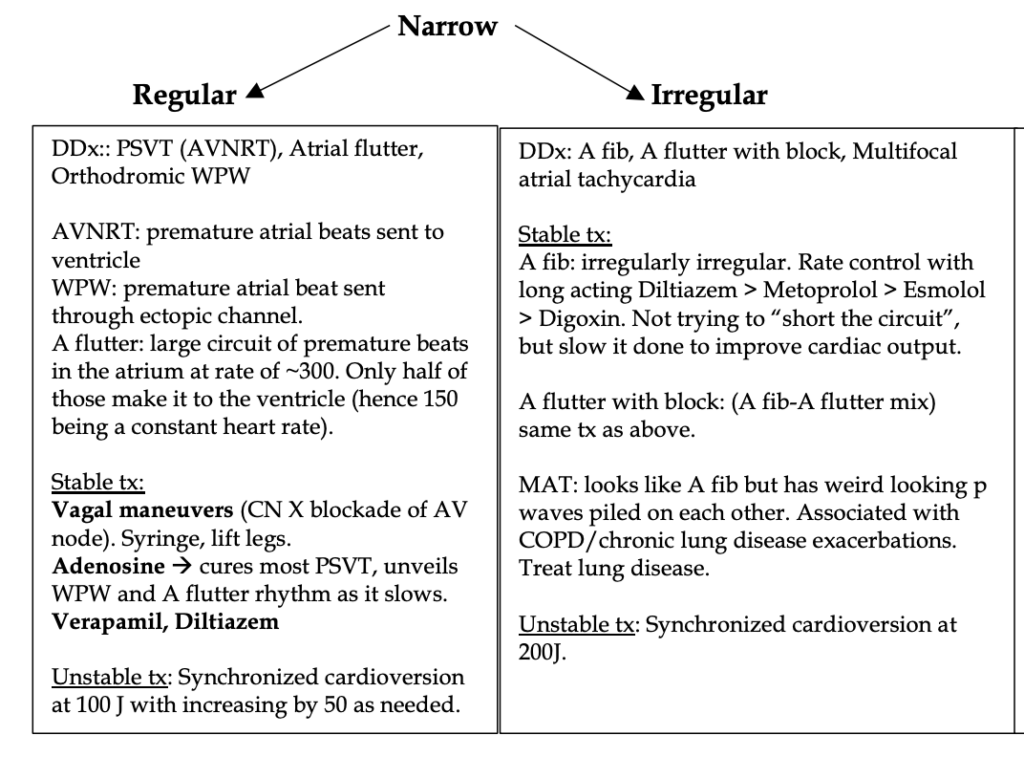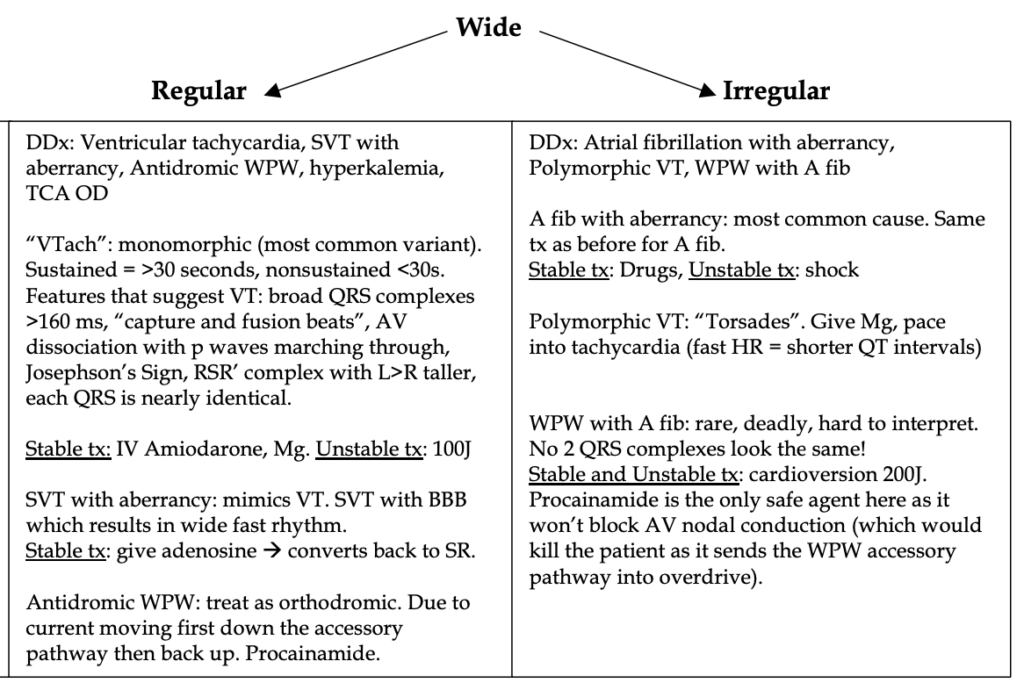Want to experience the greatest in board studying? Check out our interactive question bank podcast- the FIRST of its kind here: emrapidbombs.supercast.com
Author: Blake Briggs, MD
Objectives: approach to tachyarrhythmias, their EKG features, treatments, and complications
Stable vs Unstable
-the most important step. Determines treatment, disposition.
Steps:
1- Stable vs unstable?
2- P waves present?
3- Regular or irregular?
4- QRS wide or narrow (<3 small boxes)?
Accelerate your learning with our EM Question Bank Podcast
- Rapid learning
- Interactive questions and answers
- new episodes every week
- Become a valuable supporter
Sinus tachycardia is NOT included in this discussion today as it is considered an “appropriate” response to some pathology. One should address underlying causes (infection, trauma, PE, etc).
Today in a general nutshell: Stable = meds first Unstable = shock first
Heart rates >140 are generally considered to be pathologic as this is when cardiac output begins to decrease.
1) Stable vs unstable: Assess ABC’s (protecting airway and verbalizing, breathing, BP >90)
2) P waves? Initial step to determine if sinus rhythm or not. Rate?
a. Must be upright and in every lead.
3) Wide or narrow?
a. Narrow = above the AV node (atrial origin)
b. Wide = below the AV node (BBB, Purkinje system, ventricular myocytes)
4) Regular or irregular?
a. Regular = predictable rhythm.
b. Irregular = rhythm is not predictable due to electricity coming in variable responses from the SA node.





